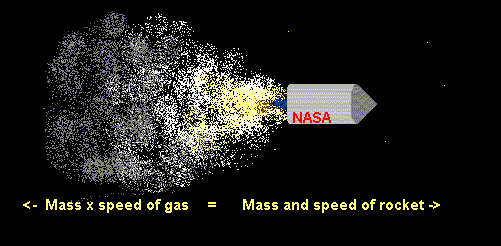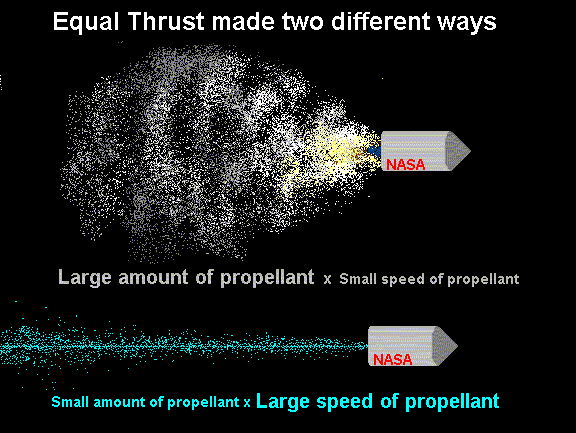PropulsionHow does propulsion work? |
Thrust is the amount of push a rocket engine provides to the rocket. Propulsion works when matter (something you can touch--like a gas or a liquid) is pushed out the back of a spacecraft. The amount of thrust or push in a spacecraft is related to how much matter is leaving the engine and at what speed the matter is leaving, minus resistance.
Momentum of rocket going forward = Momentum of propellant streaming out the back - resistance
Although resistance is important in flight on Earth or in getting off of Earth, once a ship enters space, it becomes less important. We can simplify by getting rid of resisitance for now.
Mass x speed of propellant streaming out the back = Mass x speed of rocket moving in the other direction.

Since thrust is determined by both mass and speed, you can reduce either speed or mass of propellant and have the same amount of thrust, as long as you increase the other. Conventional rockets have a lot of propellant going out relatively slowly, while ion propulsion rockets have a little propellant going out very fast--they make an equivalent amount of thrust.

![]()
What is a propellant?
How does DS1's engine work?
How could something as small as an atom move a space craft?
What is the difference between an ion engine and a conventional one?
How do conventional rockets work?
![]()
Why is mass important?
How fast do conventional rockets go?
What is resistance?
![]()
What is specific impulse?
What are some rocket propellants?
How is rocket propulsion different from jet propulsion?
How do you calculate rocket engine performance?
![]()